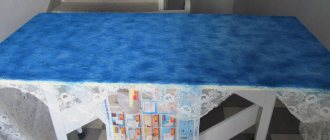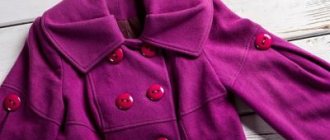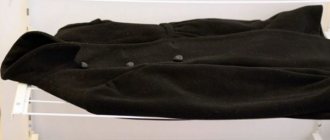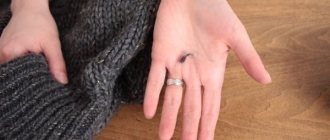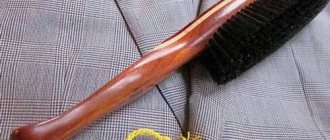Preparing for a wedding is the most exciting and touching moment that any bride will forever remember. Particular attention is always paid to the choice of dress and wedding accessories, which include gloves, a garter, a shawl, shoes and, of course, a veil. And if there are practically no problems with small parts, then if stored and transported incorrectly, the veil can become very wrinkled. This is especially unpleasant when the problem was discovered right before the celebration. But don't panic in advance! We'll tell you how to quickly iron your veil so that your look remains simply irresistible.
Read how to iron a wedding dress here
Features of working with tulle
Almost any veil is made from tulle. This is a rather capricious material that can break even with slight bending. Therefore, the veil wrinkles during transportation or storage, which leads to loss of its beautiful appearance. Tulle is a delicate material. It is quite lightweight, mesh and translucent. At the same time, its texture is hard, so if even a small wrinkle appears, it will be difficult to deal with it.
But besides this, there is another feature - tulle is very difficult to perceive high temperatures. As soon as you touch it with a very heated iron, the mesh will instantly crumble, leaving a burnt hole.
Therefore, any products made from tulle should not be ironed in the usual mode, and if they try to do this, they will certainly place a clean cloth between the electrical device and the fabric itself.
Tulle also requires preliminary soaking. This will save time on direct ironing, and if after soaking you hang the product in a well-ventilated area on the loops, then ironing may not be required at all. Soaking is carried out in warm water, you can add a couple of drops of softener for delicate fabrics.
It is important to pay attention to the equipment that will be used in the work. So, the surface of the iron should be:
- perfectly clean;
- no traces of stuck fabric;
- no cracks, chips or scratches.
When working with tulle, the iron must be set to the “Synthetic” mode. It differs from the usual one in the minimum heating temperature.
See also
Step-by-step instructions on how to starch a dress at home
Types of fabric for processing
A light and airy dress made of natural silk or chiffon is best steamed while hanging. Chiffon can be processed very quickly, the main thing is not to overdo it and not to get it wet. The steamer nozzle should be kept at a distance from the fabric.
Lace details or lace trim must be handled extremely carefully. For ironing, you should take a thin white fabric and iron it through it, then the lace will not be yellow after ironing.
Satin is steamed exclusively from the underside of the fabric. When ironing satin, you should additionally place a thick and clean fabric under the dress. It is not recommended to spray water on a satin product, as marks may remain.
Tulle can become deformed due to high temperature, so it is better to straighten it by weight, not allowing the steamer to come into contact with the fabric. Beads and rhinestones should not come into contact with the hot surface of the iron.
How to smooth a veil correctly
There are various ways to smooth out a veil. But, alas, there is no universal solution. For some products, a hairdryer or spray bottle is suitable (usually those decorated with beads or sequins), while others can be ironed with a regular iron, after placing napkins or a thin towel on the fabric.
With iron
You can iron a tulle veil with an iron, but this is done extremely carefully. The first thing you need to do is set the required temperature range on the iron. If you look at the marks, it should be set to one or two, the mode is for synthetics or delicate fabrics. A one usually copes, but if the creases are serious, then they switch to a two.
Next you need to persuade additional fabric. Materials created specifically for ironing synthetic soft fabrics are sold in specialized stores, and can also be ordered online. But if this is not possible, then ordinary gauze will do. It is rolled up in several layers and placed over the entire surface of the tulle.
The gauze must be used wet, but it should not be so wet that you can squeeze out the water.
The tulle veil is placed on a flat surface, covered with several layers of gauze and ironing begins. It is advisable to check on the most inconspicuous part of the veil how exactly the material will behave when exposed to temperature. As a last resort, if a burnt spot remains, it can be disguised with a brooch or hair curls.
Hair dryer and spray bottle
This method is used if the creases are not too strong, and there are decorations on the veil that can simply melt under the influence of the iron. Fill a spray bottle with warm water; you can add a couple of drops of the composition to soften the tissues. Distribute evenly throughout the material, paying special attention to the most problematic areas. After this, proceed to drying with a hairdryer. It is kept no closer than 15 centimeters from the fabric, the stream should spread evenly. Do not use very hot air, as it can damage the fabric fibers.
Hot bath and shower
One of the simplest ways, but at the same time effective, is to hang a veil in the bathroom. You need to close the doors tightly and turn on the hot water faucet in the bathroom. Naturally, hot air should not get directly onto the veil - it will burn the fabric and ruin its structure. For ordinary tulle, 15 minutes of such exposure is enough. The main thing is that there are no foreign odors in the bathroom or shower. If they get into the texture of the fabric with the help of hot air, it will be difficult to get rid of.
See also
Ideas for crafts made of cement for a summer residence and how to properly make figures with your own hands
Hot kettle
Using a hot kettle is convenient if a local effect is required. Clean water is boiled and a certain place on the veil is brought to the spout of the kettle. The main thing is to hold the fabric and not allow it to be less than 15 centimeters from the spout.
Steam generator
A special steamer initially saves time. It is used not only for smoothing tulle, but also for other delicate fabrics. For example, the device can handle silk, corduroy, help smooth out a jacket made of genuine leather or leatherette, and process a fur outerwear. Steam generators cost a lot, their price is approximately equal to an average iron. But for those who prefer to dress in fine fabrics, such an acquisition is necessary. The steamer works with an item that is placed strictly vertically. Use a regular hanger, and secure the veil firmly with pins or hairpins.
Clean water is poured into the steam generator and plugged into the network. Wait until the corresponding signal appears that the required indicators have been achieved - then steam will begin to be produced. The steam generator works up and down, without making unnecessary movements. There is no need to rush; to steam a thing, you need to hold the device over a certain location for 2-3 seconds. But you cannot leave it for 10 seconds, as the structure of the tulle may be damaged.
When working with a steam generator, certain safety rules must be followed.
Wear protective gloves on your hands to prevent accidental burns from the steam. Under no circumstances should the steam flow be directed towards the face area. If there are sequins or beads on the veil, then it is impossible to expose them to a steam stream for a long time - they may come off, or the color will become less bright, the paint will peel off.
Contacting specialists
Contacting specialists will help you get excellent results without risk. They use special steamers that are highly effective, but at the same time absolutely safe for delicate fabrics. Of course, you will have to pay for the services, but looking impeccable at the wedding ceremony is worth it.
See also
14 simple and effective ways to reduce shoe size
Iron or steam generator?
If you have the opportunity to use a steamer at home, then you should definitely prefer it. It can easily handle all creases even on voluminous curtains, and not just on a wedding veil or full skirt. Gentle steam will not spoil the delicate structure of the fabric, but will easily return the ironed look to the product.
But if there is no steam generator, you will have to suffer with the iron. Exactly like that - long, systematically, patiently, carefully. A large item like a wedding dress will take at least an hour of time and patience.
- The iron must be set to the minimum temperature; do not pour water into the special compartment.
- Place a soft towel on the ironing board.
- Thick fabric is placed on top of the tulle, which will help avoid contact of the delicate mesh material with the sole of the iron.
- Ironing of the dress begins from the front, with large parts, such as the bodice and skirt, gradually moving to smaller ones - sleeves, collar, ruffles.
- It is more prudent to start with the bodice, since a full skirt with many folds is much more difficult to iron, but it is much easier to wrinkle if the top is ironed after it.
- If the top of the dress is decorated with beads, rhinestones or embroidery, a soft towel should be placed on top for protection.
- To iron sleeves, you will need a special stand, which is included with each ironing board.
- After ironing the sleeves, you need to insert tubes of thick paper into them to maintain their shape.
- It is important to constantly check the ironed areas to see if there are any minor dents or wrinkles that could ruin the entire festive mood, and, if necessary, iron out the noticed flaws again.
- The ironed product should be hung on hangers.
It will be much easier to iron a skirt or veil, since their shape and size will not create unnecessary difficulties in the work.
- The iron must be set to the minimum temperature; do not pour water into the special compartment.
- Place a soft towel on the ironing board.
- Thick fabric is placed on top of the tulle, which will help avoid contact of the delicate mesh material with the sole of the iron.
- Ironing of the dress begins from the front, with large parts, such as the bodice and skirt, gradually moving to smaller ones - sleeves, collar, ruffles.
- It is more prudent to start with the bodice, since a full skirt with many folds is much more difficult to iron, but it is much easier to wrinkle if the top is ironed after it.
- If the top of the dress is decorated with beads, rhinestones or embroidery, a soft towel should be placed on top for protection.
- To iron sleeves, you will need a special stand, which is included with each ironing board.
- After ironing the sleeves, you need to insert tubes of thick paper into them to maintain their shape.
- It is important to constantly check the ironed areas to see if there are any minor dents or wrinkles that could ruin the entire festive mood, and, if necessary, iron out the noticed flaws again.
- The ironed product should be hung on hangers.
It’s easier to use not a simple iron, but a special steamer or steam generator, which are often used in wedding salons. Thanks to this technique, you can quickly and effortlessly bring your wedding dress into proper shape.
If you're lucky enough to have a steam generator or vertical steam iron, it's best to style your outfit on a mannequin. As a last resort, hang the dress on hangers. To avoid scorching thin synthetic fabrics that easily melt when heated, keep the steamer at a distance and use it only at the lowest temperatures.
Put a protective glove on your hand and gradually steam all the existing folds one by one. After the dress has been ironed, it must be left hanging or on a mannequin for a while until the fabric has cooled. If necessary, the steaming procedure can be repeated.
It’s easier to use not a simple iron, but a special steamer or steam generator, which are often used in wedding salons. Thanks to this technique, you can quickly and effortlessly bring your wedding dress into proper shape.
If you're lucky enough to have a steam generator or vertical steam iron, it's best to style your outfit on a mannequin. As a last resort, hang the dress on hangers.
To avoid scorching thin synthetic fabrics that easily melt when heated, keep the steamer at a distance and use it only at the lowest temperatures. Put a protective glove on your hand and gradually steam all the existing folds one by one. After the dress has been ironed, it must be left hanging or on a mannequin for a while until the fabric has cooled. If necessary, the steaming procedure can be repeated.
Preventing the appearance of folds and creases
To ensure that the veil does not lose its beautiful appearance before the bride shines in front of the groom and her closest people, you need to follow some recommendations. Direct ironing alone will not be enough to ensure that the veil retains its appearance until the wedding. You need to learn how to store it correctly. Simply putting it in a closet with other things is not a suitable option. This way the veil will become unusable, and creases and folds will appear on it again, which are difficult to remove. Several ways have been developed to preserve an ironed veil until the wedding:
- covers for a wedding dress - if space allows, the veil is placed in a cover for the dress, so it will retain its freshness;
- special case - for a decorative veil of a large size or with a lot of beautiful additional details, a case is made separately;
- homemade bag - great if you have a sewing machine in the house - you can sew the cover yourself in a few minutes in the manner of a regular duvet cover, but smaller in size; in extreme cases, use plastic storage bags.
Only completely dry items are placed in bags or cases. If you put something wet inside, it is more likely to wrinkle.
Is it possible to wash a wedding dress at home?
A soiled wedding dress can upset a young wife with its appearance, but there is no need to despair. Wanting to solve the problem as quickly and without hassle, some women prefer to take their wedding dresses to dry cleaners, but the results of such companies are not always able to satisfy customers.
A stained wedding dress can be washed at home
Aggressive detergents and powders used to treat clothes in dry cleaning conditions can sometimes cause serious damage to the structure of a particular type of fabric. After such treatment, a luxurious wedding dress can become irreparably damaged, turning into a Cinderella outfit.
After dry cleaning, a wedding dress may lose its original appearance.
Wanting to avoid such a situation, it is advisable to wash the wedding dress yourself, using an individual approach to various types of contamination. This will help achieve maximum effect and will also guarantee the safety of your item. Provided the washing procedure is carried out correctly. On branded products you can easily find a label containing information about the type of fabric used in the manufacture of the outfit, as well as the manufacturer’s recommendations regarding washing and ironing of the product.
Initially, you need to inspect the dress for dirt, paying special attention to the hem, where traces of road dust most often remain, as well as the places under the arms where yellowish sweat stains form. Don’t also forget about the inside of the bodice, which will also need to remove dirt.
When preparing a wedding dress for washing, the type of material from which it is made is of particular importance. In most cases, in the manufacture of this kind of outfits, synthetic fabrics are used, which require hand washing.
A branded wedding dress must have a label with recommendations for its care.
Since various decorative elements in the form of beads, rhinestones and beads are used as decoration for wedding dresses, you should treat them very carefully during washing. In some cases, glue is used to fasten them, due to which the rhinestones can easily fly off. If this happens during washing, do not despair too much. It will be possible to restore floral patterns manually using threads or specialized adhesives.
Richly decorated bodice of a wedding dress
A few tips on how to prevent wrinkles in the material
To avoid wrinkles, many housewives manage to ruin the fabric, since caring for it is very difficult. Quite rarely in everyday life, a business person who devotes himself only to work and home puts on a dress or skirt made of tulle. Usually this happens only on holidays, and preparations for such an event are usually made in advance. The only problem is that you can’t sew the torn fabric back together yourself, since the seam may be noticeable. The studio probably knows how to cope with this task without noticeable signs of material rupture.
Related article: Fashionable curtains: trends for 2021
In order to iron out a tulle outfit as little as possible, you should properly care for this fabric - it can become wrinkled after the first try on. There are a few tips to avoid unnecessary work:
- tulle can be washed at a temperature of 40 degrees;
- when spinning in a washing machine, you should choose a more gentle mode, but it is better to do without it altogether;
- It is better to add fabric softener during the washing process;
- When washing by hand, you should do without squeezing the fabric, you just need to hang the product on a hanger, shake it well and wait until it dries in the sun;
- to avoid using an iron, you can carefully dry your outfit with a hairdryer, choosing not the highest power;
if the colored tulle has lost its brightness, then when rinsing the outfit, you can use water and vinegar, which you will need very little to add to a container of water.
